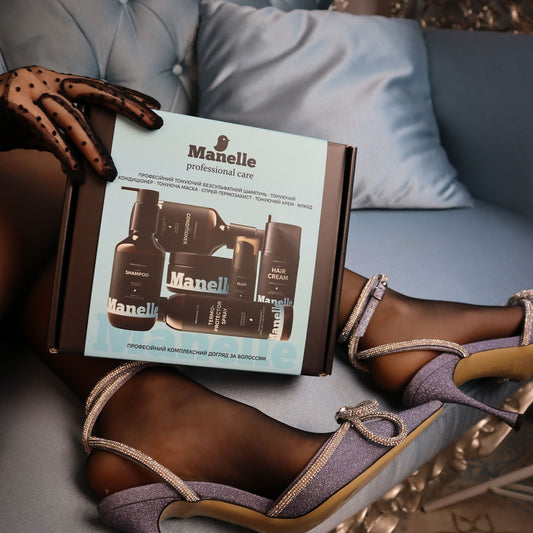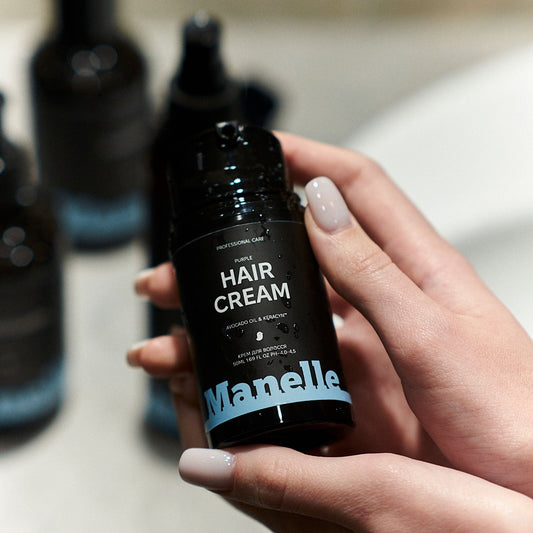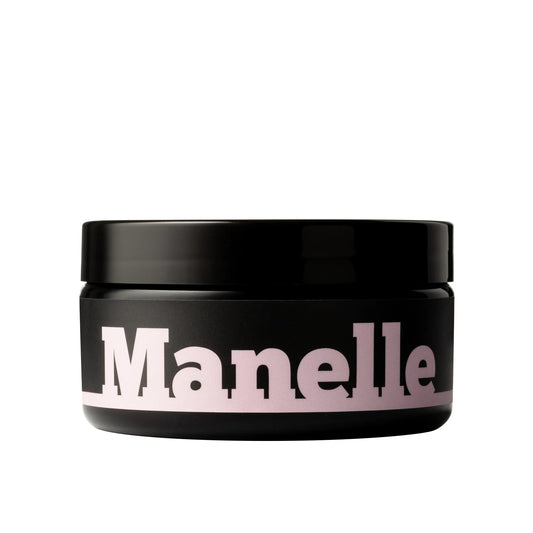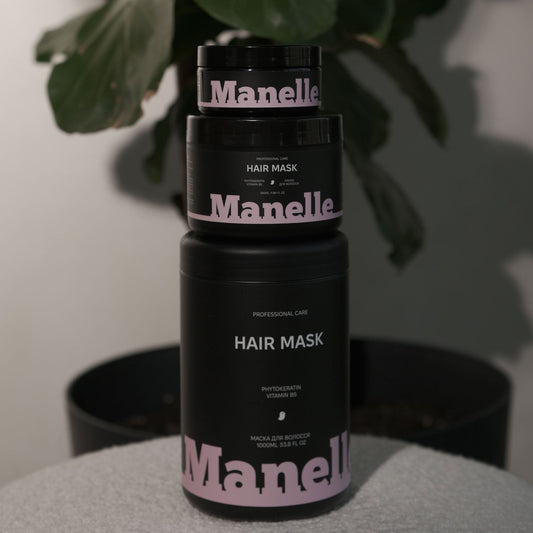
Cream for colored hair: how to preserve the color and health of curls
Hair coloring is not only a change of image, but also a serious test for the structure of each hair. Pigments penetrate deep into the hair, opening the cuticle, which makes the hair vulnerable to moisture loss, brittleness and fading. That is why cream for colored hair has become an indispensable product in care, helping to prolong the life of the color and restore the damaged structure.
Why colored hair needs a special cream
The dyeing process radically changes the internal structure of the hair. Chemical components open the cuticle scales so that the pigment can penetrate the shaft. After this, the hair becomes porous, loses natural lipids and proteins that protected it from external influences. Without proper care, the color quickly loses its saturation, and the curls become dull and dry.
Cream for colored hair is designed to address these changes. It contains special ingredients that seal the cuticle, lock in the pigment, and replenish lost nutrients. Unlike conventional products, such creams have a neutral or slightly acidic pH, which helps close the cuticle and keep the color vibrant for longer.

Main functions of cream for colored hair
A quality cream performs several important tasks at once. First, it creates a protective barrier around each hair, which prevents the pigment from washing out during washing. Second, it nourishes and moisturizes damaged areas, filling the voids inside the shaft. Third, it prevents the effects of ultraviolet light, chlorinated water and thermal tools, which are especially aggressive to treated hair.
Regular use of hair cream helps to extend the intervals between coloring. When hair receives enough moisture and protection, the color remains bright for up to 6-8 weeks instead of the usual 3-4. This not only saves the budget, but also reduces the chemical load on the curls, which is critically important for their health.
In addition, modern cream formulas often contain heat-protecting components and UV filters. This is especially important for those who regularly use a hairdryer, flat irons or spend a lot of time in the sun. Dyed hair fades and deteriorates faster from high temperatures, so additional protection becomes a necessity, not a luxury.
What ingredients to look for in a cream for colored hair
Proteins and keratin are the basis for restoring damaged structure. Keratin molecules penetrate the porous areas of the hair and fill the voids that formed after dyeing. This makes the hair stronger, more elastic and less prone to breakage. Hydrolyzed silk or wheat proteins have a lower molecular weight, so they penetrate more easily and work at a deeper level.
Natural oils provide intensive nourishment and restore the lipid layer. Argan, jojoba and macadamia oils contain fatty acids that are identical to the natural lipids of hair. They smooth the cuticle, add shine and prevent dryness. Avocado oil is rich in vitamin E, which protects against oxidative stress and prolongs the durability of the pigment.
Moisturizing ingredients — hyaluronic acid, glycerin, and aloe vera — lock in moisture inside the hair. Dyeing disrupts the water balance, making curls dry and stiff. These ingredients create an invisible film that prevents moisture from evaporating and maintains optimal hydration levels throughout the day.
Types of creams for colored hair
Leave-in creams
This is the most popular format for daily use. They are applied to damp or dry hair after washing and are not rinsed off. The leave-in cream works throughout the day, protecting against static, humidity and mechanical damage. It is ideal for those who often style their hair with a hairdryer or flat irons, as it creates a thermal protective barrier.
The light texture of such creams does not weigh down the hair or make it greasy. Modern formulas contain new generation silicones that do not accumulate on the surface, but are evenly distributed and washed off with regular shampoo. This is especially important for thin hair, which quickly loses volume from overly nourishing products.
It is best to apply the leave-in cream to towel-dried hair, distributing it along the entire length, avoiding the roots. A pea-sized amount is enough for medium-length hair. Regular use helps maintain smoothness, shine and elasticity, and the color remains saturated even after dozens of washing procedures.

Deep-acting cream masks
Intensive cream masks are designed to be used 1-2 times a week. They have a thicker texture and a high concentration of active ingredients. The duration of action is from 5 to 20 minutes, depending on the degree of damage. Such masks penetrate deep into the core, restoring its structure at the cellular level.
Cream masks are especially necessary after aggressive lightening or radical color changes. They compensate for lost proteins, restore elasticity and prevent further damage. Some formulas contain acids (lactic, malic), which gently exfoliate old cuticle scales and stimulate cell renewal.
For maximum effect, the mask should be applied to clean, slightly dried hair. You can use heat - wrap your head with a towel or use a thermal cap. Heat opens the cuticle and improves the penetration of active ingredients. After rinsing, the hair becomes soft, manageable and acquires a mirror shine.
Styling creams with color protection
These products combine styling and care functions. They help create the desired hairstyle, control frizz, and protect color from fading at the same time. Styling creams contain polymers that fix the shape and nourishing ingredients that care for the hair structure.
The special feature of such creams is their light texture, which does not stick hair together or leave a sticky feeling. They are ideal for creating natural styling with the effect of "beach waves" or smooth hairstyles. UV filters in the composition protect against fading, which is critically important in the summer and during a vacation at sea.
You can apply the styling cream to both wet and dry hair. For voluminous styles, it is best to use it on damp hair before blow-drying. For shine and control of individual strands, rub a small amount between your palms and apply to the ends of dry hair.
How to choose the right hair cream depending on the type of dyeing
For bleached hair, you need creams with maximum restorative effect. Lightening destroys the structure the most, making the hair porous and prone to breakage. Look for formulas with a high content of proteins, ceramides and oils. Purple pigments are also useful, which neutralize yellowness and maintain the cool shade of blonde.
For dark hair coloring, it is important to maintain the depth and saturation of the color. Dark pigments wash out faster, making the color dull and reddish. Creams with black tea extract, coffee or cocoa help nourish dark shades. Antioxidants protect against sunburn, which is especially important for brown-haired and brunettes.
Bright colors (red, pink, purple) require maximum protection against washing out. These pigments are the least stable and quickly lose intensity. Creams with an acidic pH (4.5-5.5) close the cuticle and keep the color inside. Some brands produce special lines for bright shades with supporting pigments.
Step-by-step instructions for using cream for colored hair
- Cleanse your hair with a sulfate-free shampoo. Sulfates aggressively strip pigment, so it's best to use mild formulas for color-treated hair. Massage your scalp, but don't scrub your hair all the way through—just enough to lather from top to bottom.
- Remove excess moisture with a towel. Don't rub your hair—this will damage the open cuticle. Just gently pat it dry and wrap it in a towel for 2-3 minutes to absorb excess water.
- Apply the cream to damp hair. Take a small amount (depending on the length and thickness), rub between your palms and distribute evenly throughout the length, avoiding the roots. Pay special attention to the ends - they are the most damaged.
- Comb through with a wide-toothed comb. This will ensure even distribution of the product and prevent individual strands from falling out. A wooden or plastic comb is better than a metal one, which can damage the hair.
- Style as usual. If using a hair dryer, hold it 15-20 cm away and direct the air flow from top to bottom along the growth of the cuticles. This will further smooth the cuticle and add shine.
Common mistakes when using cream for colored hair
People often use too much product, which can lead to a greasy effect and loss of volume. Color-treated hair needs moisture, but not overloading it. A cherry-sized amount is enough for long hair and a pea-sized amount for short hair. It's better to apply less and add more as needed than to rinse off the excess.
Another mistake is applying cream to the roots. This clogs the pores of the scalp, disrupts sebum production, and leads to rapid hair contamination. The cream should work on the lengths and ends, where the hair is most damaged. The roots receive nutrition from the scalp and do not need additional products.
Many people forget about regular use. Colored hair needs systematic care, not occasional. A single application of a cream mask will not solve the problem of dryness or brittleness. A comprehensive approach is needed: a daily leave-in cream plus an intensive mask once a week. This is the only way to maintain the health and beauty of the color for a long time.
Additional tips for maintaining color vibrancy
In addition to using specialized creams, it is important to follow a few simple rules. Wash your hair with warm, not hot water - high temperatures open the cuticle and help wash out the pigment. Finish the procedure with a cold rinse, which closes the scales and adds shine.
Limit the use of heat tools or always use a heat protectant. Colored hair loses its natural protective layer, so temperatures above 180°C destroy its structure. If styling is unavoidable, use curling irons and flat irons with ceramic or tourmaline coating on medium temperatures.
Protect your hair from the sun, chlorinated water, and seawater. In the summer, wear a hat or use sprays with UV filters. Before swimming in the pool or sea, apply a leave-in cream — it will create a protective barrier. After contact with chlorine or salt, be sure to rinse your hair with fresh water and apply a moisturizing mask.
Top hair cream ingredients to avoid
Not all creams are equally beneficial for colored hair. Some ingredients can accelerate the color fading or further damage the structure. Here is a list of ingredients to avoid:
- Sulfates (SLS, SLES) - aggressively cleanse, washing away not only dirt, but also pigment
- Mineral oils and petroleum jelly — create an impermeable film that prevents nutrition
- First-generation silicones (dimethicone) — accumulate on the hair, making it heavy
- Alcohols (alcohol denat, isopropyl) — dry hair and cause breakage
- Salts (sodium chloride) — open the cuticle and contribute to color loss
Please note that not all silicones are harmful. Water-soluble silicones (dimethiconol, cyclopentasiloxane) are easy to wash off and do not accumulate. They create a light protective layer that smoothes hair without weighing it down. Read the ingredients carefully and choose products from trusted brands with transparent formulas.
Hair cream: a comprehensive approach to preserving color and health
Cream for dyed hair is not just a cosmetic product, but a necessity for those who want to maintain the brightness of the color and the health of their curls. A properly selected cream compensates for damage from chemical exposure, nourishes the structure and creates a protective barrier against external factors. It is important to understand the difference between leave-in creams for daily use and intensive masks for deep restoration - each of them performs its function in the care system.
Success in preserving color depends not only on the quality of the cream, but also on a comprehensive approach. Use sulfate-free shampoos, protect your hair from ultraviolet rays and high temperatures, and regularly apply moisturizing masks. Remember that dyed hair requires more attention and care, but the result - bright, long-lasting color and healthy, shiny curls - is worth the effort. Invest in quality products and be systematic - and your hair will look salon-like every day.
















